Project Features
The new home of the GSE has been designed to further four main goals: building community, fostering interdisciplinary collaboration, facilitating contemporary teaching and research, and accelerating impact in the world.
Here are a few features of the new campus.
Gathering spaces
The new campus centers around a spacious atrium and outdoor courtyard. In addition to space for large convenings, the buildings feature a wide variety of flexible meeting spaces, both indoors and outdoors, as well as informal hubs for collaboration.

The forum
The courtyard entrance to the north building leads to a wide atrium, known as the forum, which can be configured with tables and chairs for informal collaboration (shown here) or as an event space. The forum will also be home to a commissioned art installation, The Gravity of the Sun, by Jacob Hashimoto.

The courtyard
A central courtyard joins the north and south buildings, and provides space for celebrations and gatherings, as well as an area that can serve as an outdoor classroom.
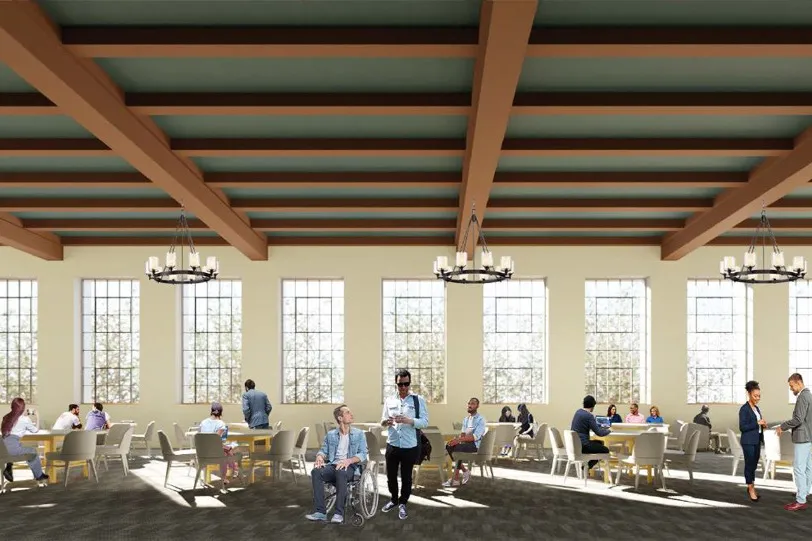
The great hall
The beloved former library space in the historic GSE building will retain its charm while being updated as a community gathering and event space, including two large breakout rooms. The great hall will be well-suited to hosting conferences, professional learning, and convenings with community partners.

The colloquium
On the fourth floor of the south building, the colloquium provides meeting space with moveable screens, a reception area, and terraces on either side, with bay and campus views.
Informal spaces
Both buildings include plenty of space for interaction, from study groups to chance encounters. Shown below: The historic building’s lobby faces the Main Quad, and opens into the new education library on the north side. The busy south building lobby is the main path to class for many students and faculty. In the north building, the area outside the auditorium provides for breakout conversations.

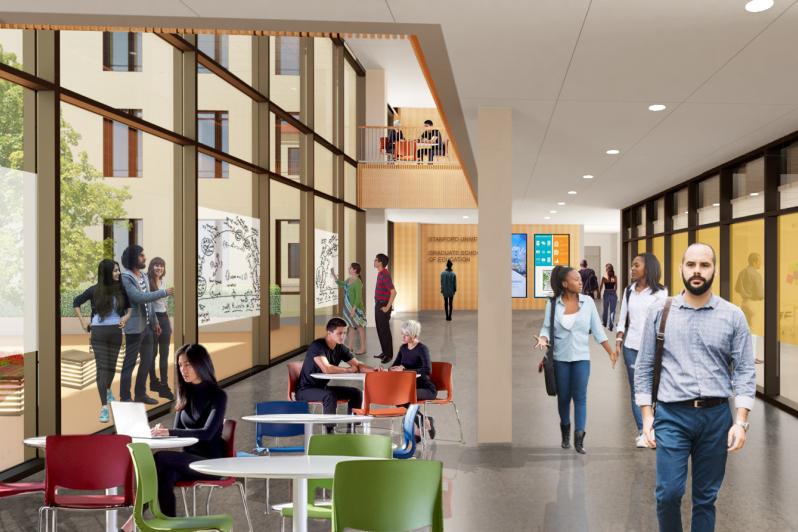


Outdoor spaces
In addition to the main courtyard, the north building will feature a sunken garden (shown here), and the south building three terraces (north, south, and east) as well as a patio facing the new Town Center.

“Collaboration is critical to take education into a currently unimaginable and brighter future. In the end, the campus will do what architecture does best: orchestrate social interaction.”
Learning and research spaces
The learning spaces at the new GSE campus have been designed to be flexible, inclusive, and interactive. With just one auditorium, the focus is on smaller learning spaces, which can also serve as research, experimentation, and demonstration spaces. Technology for data collection and visualization, virtual teaching and learning, and hands-on experimentation fuel creativity and innovation.

Auditorium
At the center of the north building is the GSE’s auditorium, scaled for larger classes, symposia, speakers, and panel discussions, and equipped with technology for remote audiences.
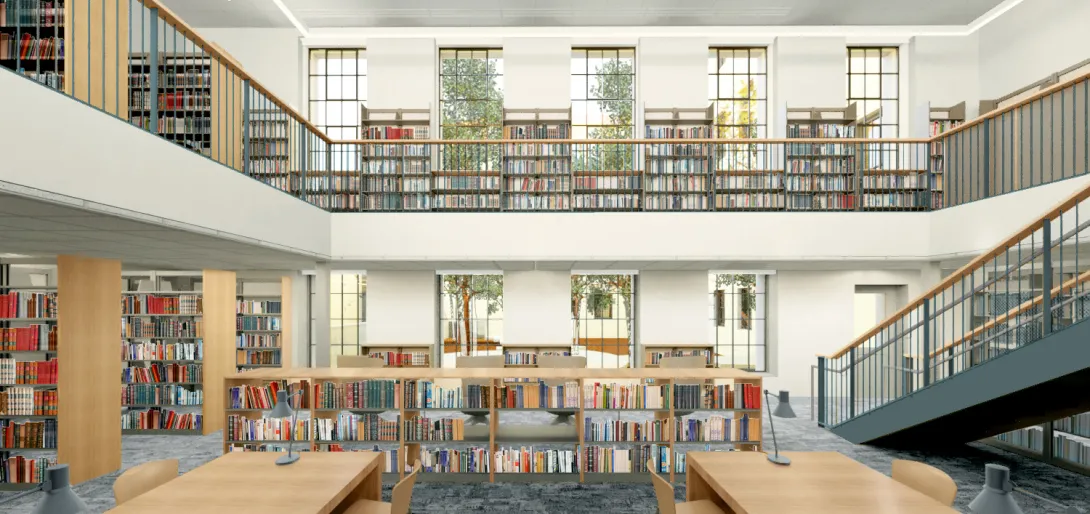
Library
The library will remain in the historic GSE building—but in a new location in the north wing near Green Library. Now on two levels with a central atrium, the library will open onto the historic lobby on the ground floor, and the sunken garden at the lower level. It will also include meeting rooms as well as informal lounge space.
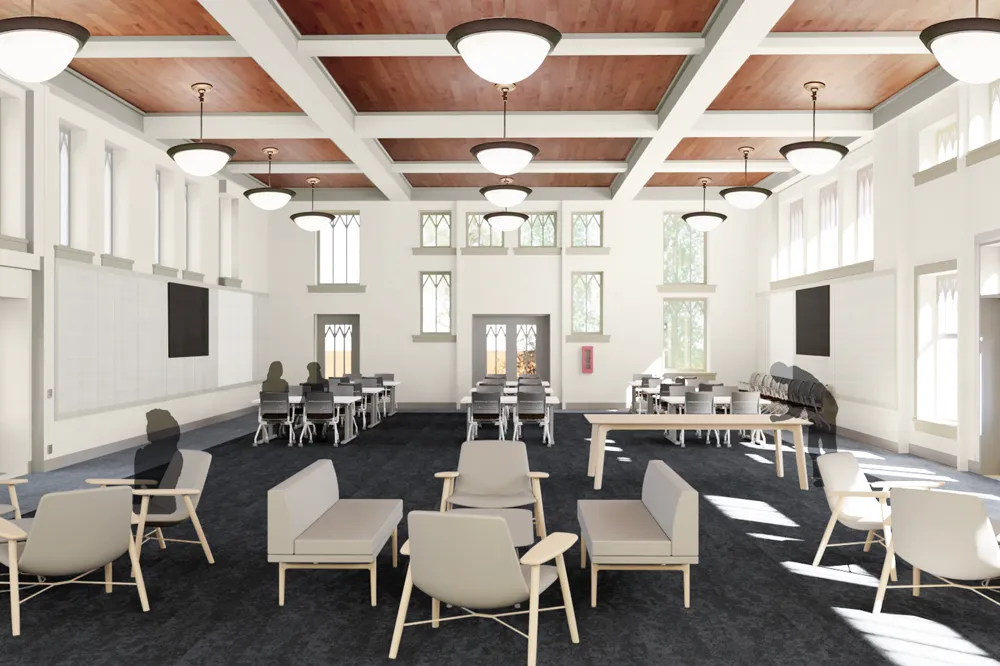
Barnum Hub
The historic Barnum Hub will be updated and outfitted with modern technology to accommodate larger interactive classes, including as a convening space for the entire cohort of the Stanford Teacher Education Program (STEP).
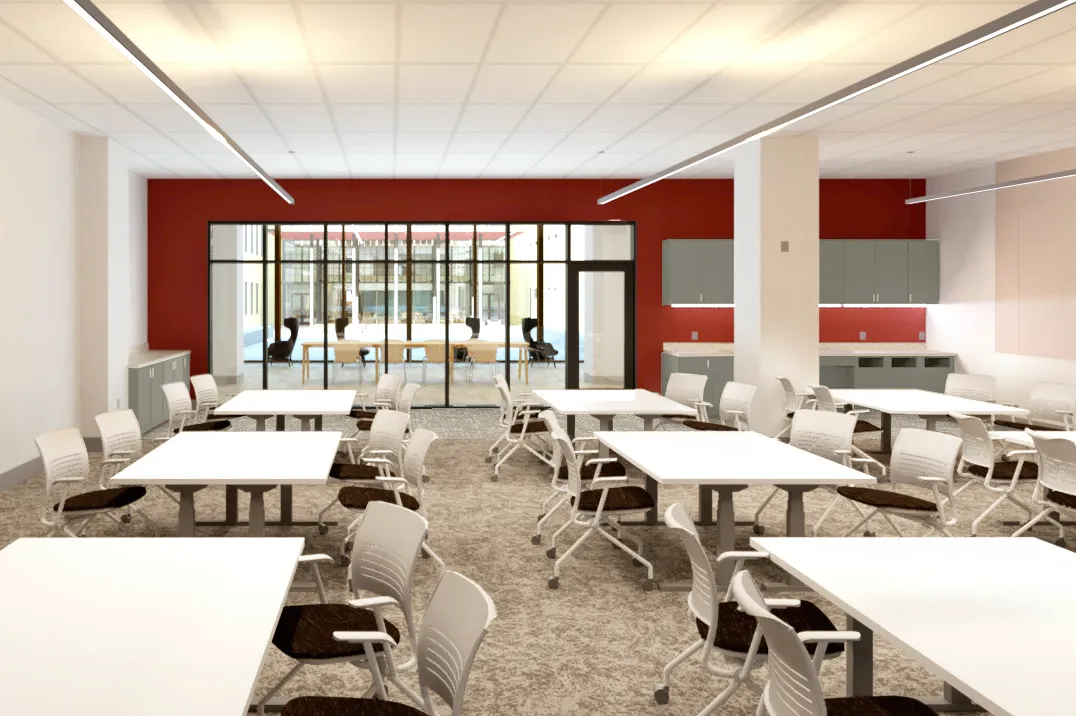
Flexible classrooms
Classroom space in the new campus is equipped with modern technology and designed for flexible use, with movable furnishings and an open plan. Shown here: A specially-designed classroom simulates the learning spaces where STEP educators will be working, furnished for project-based and group work and featuring a sink and storage for classroom materials.
